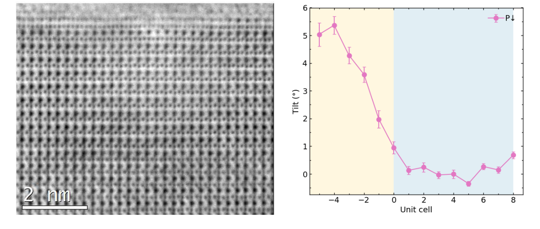GENERAL SEMINAR: Prof. Ana Sanchez Department of Physics, University of Warwick,United Kingdom
The development of spherical aberration correctors for electromagnetic lenses established a major improvement in the new generation of electron microscopes. The growing desire to control materials at an atomic level requires the capability to image and analyse material with atomic resolution. This work focuses on the application of state of the art electron microscopy to ferroelectric oxide materials.
Using aberration-corrected scanning transmission electron microscopy (STEM), we analysed in detail the domain structure of PbTiO3/(La,Sr)MnO3 ferroelectric capacitors with ultra-thin active layers. Annular Bright Field (ABF) imaging was used to visualise the both heavy and light elements, measuring the relative displacement and dipole distribution unit cell by unit cell. For a given system with a set lattice strain, the depolarization field becomes large – approaching the polarisation of the ferroelectric – at small film thicknesses (a few unit cells). The polarisation maps of different PbTiO3 thin films revealed a clear influence or the asymmetric screening of the depolarizing field on the equilibrium domain pattern. The dipole distribution reveals the evolution from conventional 180° Kittel type domains to flux closure and vortex type domain configurations with reduced film thickness. Additionally, effects such as polarisation and octahedral tilt suppression can be observed local to the interface. We show how the different polarisation orientations interact with the LSMO at the interface. This provides insight into how such devices may be designed and tuned to achieve the desired performance.

Figure 1. (a) ABF-STEM image of the LSMO/PTO interface (b) Out of plane octahedral tilt profile